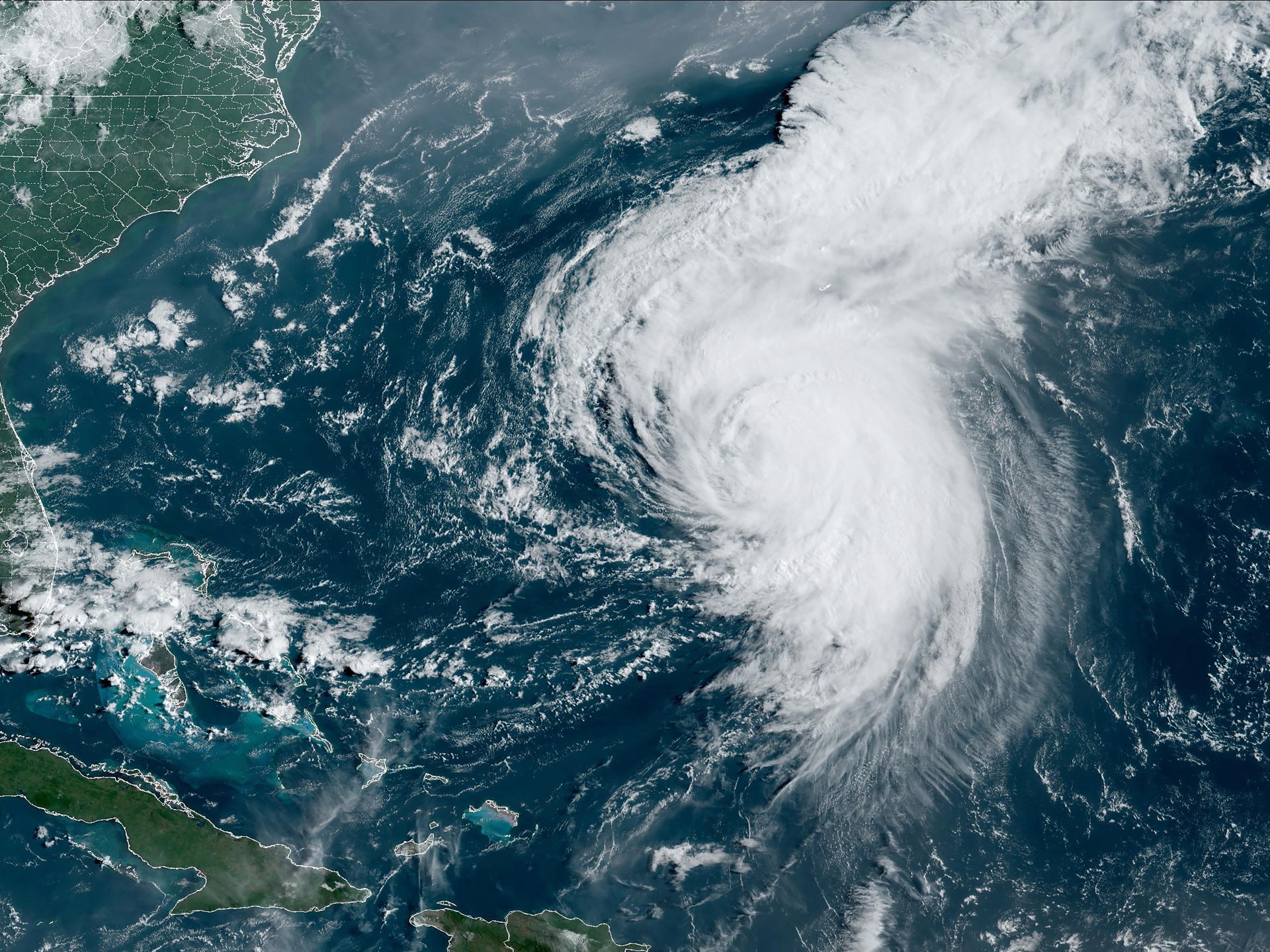Seven astonishing consecutive months of record-breaking heat have culminated a grim milestone for humanity: 2023 was officially the hottest year on record on Earth.
That evaluation, announced on Tuesday by the Council of the European Union Copernicus Climate Change ServiceIt follows a year in which extreme heat blanketed multiple continents simultaneously, raising ocean temperatures to alarming levels and prompting dire warnings about the worsening effects of climate change.
“2023 was an exceptional year in which climate records fell like dominoes,” reads a statement from Samantha Burgess, deputy director of Copernicus. “Not only is 2023 the warmest year on record, it is also the first year in which every day is more than 1 degree Celsius warmer than in the pre-industrial period. “Temperatures during 2023 will likely exceed those of any period in at least the last 100,000 years.”
With a global average temperature of 58.96 degrees, last year was about 0.31 degrees warmer than the previous warmest year on record, 2016, according to Copernicus data. December was also the warmest on record globally, as were all the months from June to November.
Official record-keeping of global temperatures began in 1850, or shortly after the end of the Industrial Revolution. Analysis of those records reveals that 2023 was 2.67 degrees warmer than the pre-industrial period, or just below 2.7 degree limit (1.5 degrees Celsius) established under the 2015 Paris climate agreement, an internationally recognized tipping point for the worst effects of climate change.
Nearly half of the days last year reached at least 2.7 degrees above pre-industrial levels, Burgess said.
Aggressive and impactful reporting on climate change, the environment, health and science.
While the global average temperature is an abstract concept for many people (no one actually lives in a climate that is constantly 59 degrees), the vast majority of Earth’s inhabitants felt the effects of extreme heat last year.
In July, the hottest month ever recorded on Earth, 81% of people on the planet They experienced elevated temperatures that are more likely due to climate change, according to an analysis by Climate Central, a nonprofit news organization that reports on the effects of climate change. Heat waves hit parts of China, Europe, North Africa, South America and South Asia.
That same month, Phoenix experienced 31 consecutive days of temperatures of 110 degrees or more, conditions so stifling that planes were grounded and sidewalks caused second-degree burns.
Off the coast of Florida, the Atlantic soared to 101 degrees – the temperature of a jacuzzi.
And in the Valley of Death, the mercury shot up to 128 degreesan almost world record.
Experts say much of the heat was Supercharged by the arrival of El Niño in Junea weather pattern associated with warmer global temperatures.
Still, the primary cause of rising global temperatures remains human-caused climate change driven by fossil fuel emissions. The 10 warmest years on record have all occurred since 2010.
“We know for sure that the two main reasons why 2023 was warm were an El Niño event in addition to long-term climate change,” said Zeke Hausfather, a climate scientist at Berkeley Earth. “Long-term warming is necessarily the foundation on which any of these records are set.”
The latest El Niño arrived on the heels of a rare three consecutive years of La Niñaits colder counterpart, which may have had a masking effect on the heat, Hausfather said.
“When you go from suppressed temperatures to enhanced temperatures, you may see a larger effect this year than, say, comparable El Niño events where you went from neutral conditions,” he said.
There are other variables that may have contributed to the runaway heat of 2023, including the Hunga Tonga volcano eruption in the South Pacific the previous year, which shot record amounts of heat-trapping water vapor into the stratosphere.
Reductions in aerosol emissions have also contributed about a tenth of a degree to warming over the past two decades, as sulfate and other aerosols in the atmosphere can reflect sunlight away from Earth, Hausfather said.
Additionally, solar activity is increasing as part of an 11-year oscillation known as the solar cycle, which periodically increases the amount of energy reaching Earth from the sun and may have contributed a couple of hundredths of a degree to the warming this year. past.
However, the heat of 2023 was a surprise even to some scientists. Historical patterns indicate that global temperatures reach their peak warmth in the year after El Niño arrives, as was the case in 2016 and 2020, the two previous warmest years on record.
That means there’s a chance 2024 could be even hotter.
“It would probably still give a slightly higher chance than even that 2024 will be warmer,” Hausfather said. “It’s going to be up there, but it’s not so clear because 2023 was very strange.”
Gavin Schmidt, director of NASA’s Goddard Institute for Space Studies, said the same thing in a publish in X that there is a 55% chance of another record year in 2024 due to the current El Niño event, but that less confidence is warranted “given the exceptional nature of 2023.”
According to Copernicus, the year was so exceptional that dozens of records were broken. June to August saw the hottest summer on record in the Northern Hemisphere, while sea surface temperatures remained persistently and unusually high, reaching record levels from April to December. Marine heat waves It hit parts of the Mediterranean, Gulf of Mexico, Caribbean, Indian Ocean, North Pacific and North Atlantic.
Antarctica sea ice extent also hit record lows for the time of year in eight different months last year, including record daily and monthly lows in February. Arctic sea ice was among the four lowest on record at its peak in March.
“The extremes we have observed in recent months provide dramatic testimony to how far we are now from the climate in which our civilization developed,” read a statement from Carlo Buontempo, director of Copernicus. “This has profound consequences for the Paris Agreement and all human endeavors. “If we are to successfully manage our portfolio of climate risks, we must urgently decarbonize our economy while using climate data and insights to prepare for the future.”
Despite those warnings, greenhouse gas emissions continued to rise in 2023. Carbon dioxide concentrations reached a record 419 parts per million, 2.4 parts per million higher than in 2022, according to Copernicus. Methane concentrations rose to a record 1,902 parts per billion (11 parts per billion more than the previous year), although the rate of methane increase was slower than in the past three years.
Experts say changing climate is exacerbating extreme events around the world, including worsening Heat waves, floods, droughts and forest fires. As of December 8, the United States alone experienced a record 25 weather and climate disasters in which damage estimates reached or exceeded $1 billion, according to the National Oceanic and Atmospheric Administration.
The data makes it clear that the 1.5 degrees Celsius benchmark is moving away. In fact, the planet briefly exceeded 2 degrees Celsius of global warming (the upper limit of the Paris agreement). for the first time on November 17 and 18according to data from Copernicus.
That same month, world leaders gathered in Dubai for COP28, an annual United Nations climate conference, where nearly 200 countries agreed for the first time move away from fossil fuels that heat the planet.
Hausfather said there is still hope, as these and other efforts can make a difference, but “we must be cautious as we move Earth further and further away from the climate it has had for the last few million years.”
“If we want to minimize the risks both to ourselves and to future generations, we must act together and start reducing emissions more quickly,” he said. “It is probably already too late to limit warming to 1.5 degrees without bypassing it. But we certainly have a good chance, if we accelerate the energy transition, to limit warming to below 2 degrees.”












